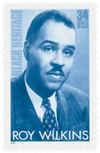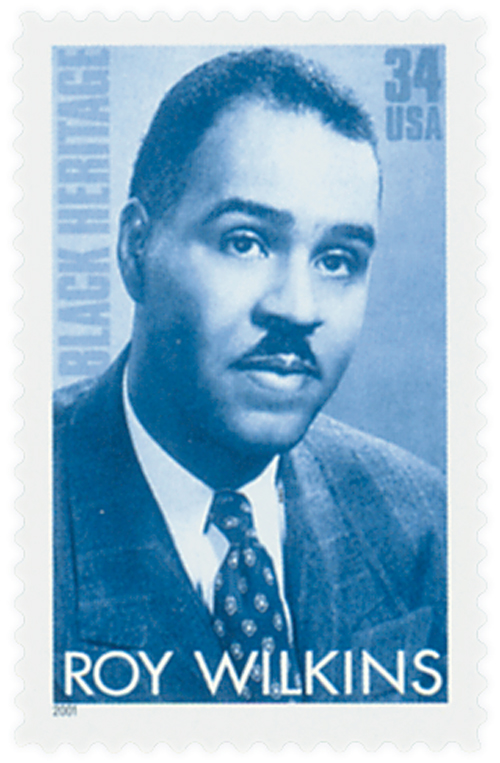
# 3501 - 2001 34c Black Heritage: Roy Wilkins
34¢ Roy Wilkins
Black Heritage
City: Minneapolis, Minnesota
Quantity: 200,000,000
Printed by: Ashton-Potter (USA) Ltd.
Printing Method: Lithographed
Perforations: Serpentine Die-Cut 11 ½ x 11 ¼
Color: Black, blue
Birth Of Roy Wilkins
Wilkins’ father had fled town before he was born because he had refused to yield the sidewalk to a white man and feared he’d be lynched. Wilkins’ mother died when he was four, after which relatives in St. Paul, Minnesota, raised him and his siblings.
While attending the University of Minnesota at Minneapolis, he joined the NAACP, the organization he later headed as executive secretary and executive director for 22 years. Also while he was still a student, Wilkins worked as a journalist for The Minnesota Daily paper. Soon after, he became the editor of the African-American newspaper, The Appeal. After graduating with a degree in sociology in 1923, he became editor of The Call.
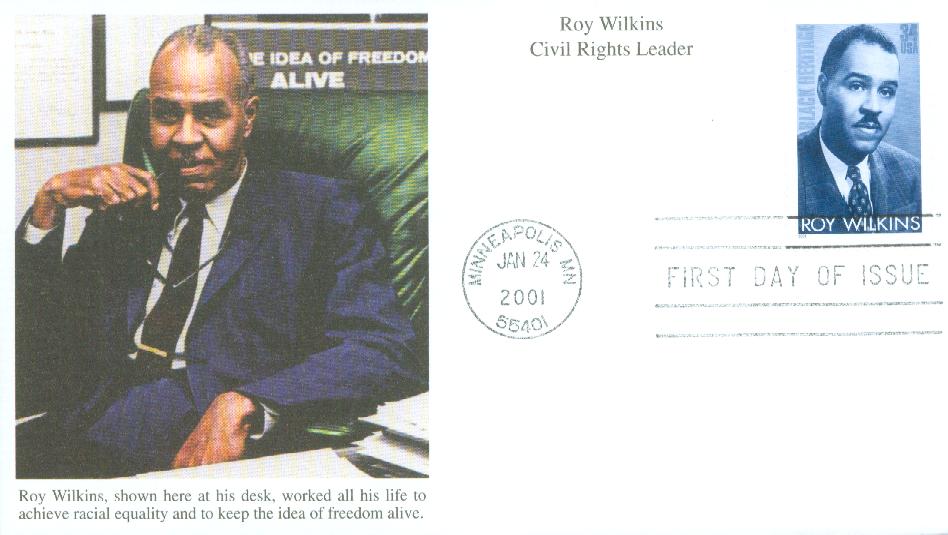
In 1931, Wilkins moved to New York City to become assistant NAACP secretary. Three years later, he took on the role of editor of the organization’s official magazine, The Crisis. Early in his career, Wilkins put himself on the line for his beliefs. In 1934, he was arrested in Washington, DC, for demonstrating against lynching. Wilkins served as an adviser to the War Department during World War II and chaired the National Emergency Civil Rights Mobilization in 1949.
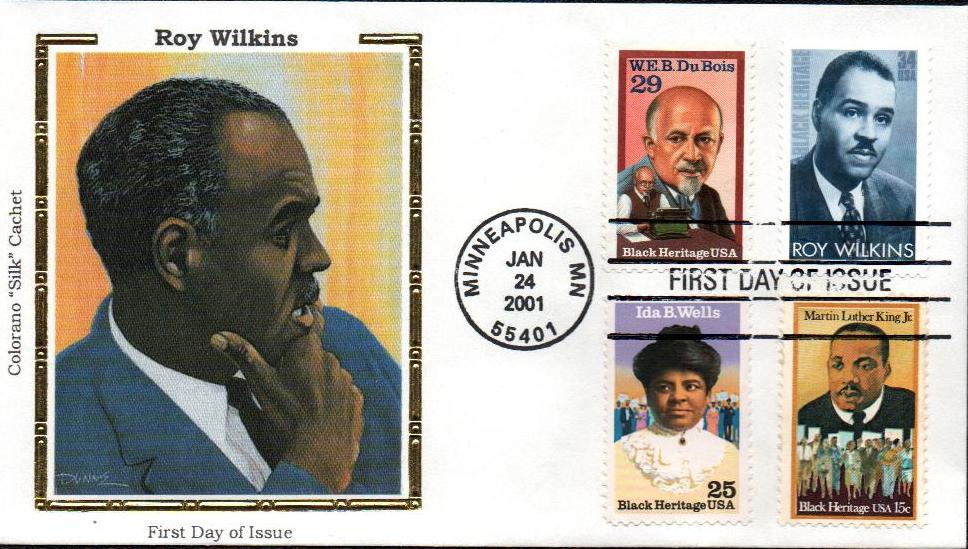
In 1950, Wilkins helped found the Leadership Conference on Civil Rights, which went on to become one of the nation’s most notable civil rights coalitions. In 1954, he helped win the Supreme Court decision, Brown v. Board of Education, which ended segregated education.
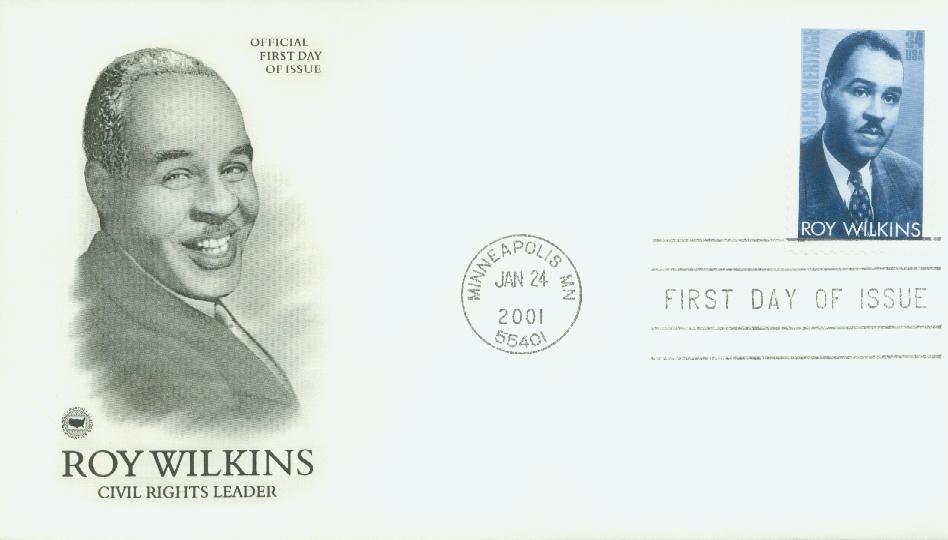
Wilkins was appointed to the position of executive secretary of the NAACP in 1955, then became executive director in 1964. During his time as a leader in the organization, he became widely known and respected for his speeches in the civil rights movements. One of the first issues he dealt with was a “credit squeeze” in Mississippi. He encouraged African-American businesses and groups to shift their accounts to a black-owned bank.
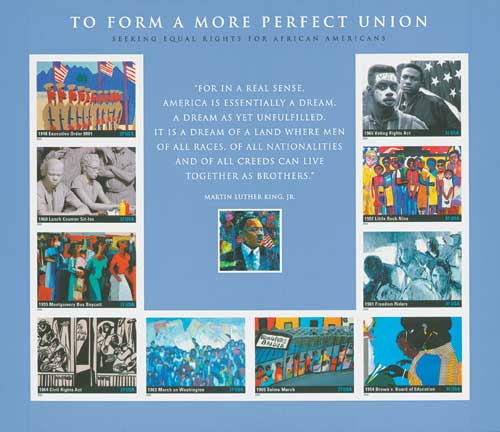
At a time when civil rights struggles were at the forefront of American news, Wilkins became a spokesperson for the cause. He supported racial equality through legislation and education rather than militancy. He helped organize the 1963 March on Washington and participated in the Selma Marches of 1965 and the March Against Fear of 1966. Under Wilkins, the NAACP worked for passage of the Civil Rights Act of 1964, the Voting Rights Act of 1965, and the Fair Housing Act of 1968.
During his time with the NAACP, Wilkins testified before several Congressional hearings and advised five US Presidents: Kennedy, Johnson, Nixon, Ford, and Carter. For his contributions to civil rights, he received the NAACP’s Spingarn Medal in 1964 and the Presidential Medal of Freedom in 1967.
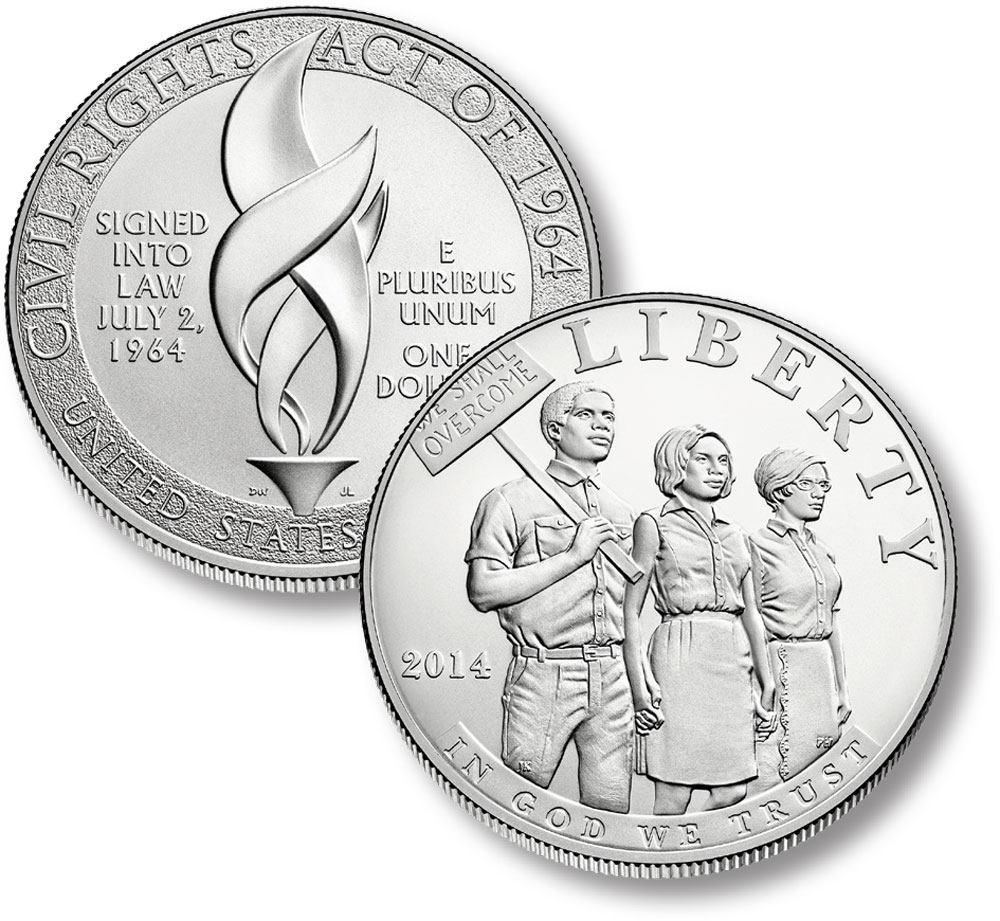
Wilkins retired in 1977 but was bestowed with the title Director Emeritus of the NAACP upon leaving. He died on September 8, 1981, in New York City from heart problems related to his pacemaker. President Reagan ordered flags flown at half-staff on federal buildings that day. Wilkins was included on the list of 100 Greatest African Americans composed by Temple University Professor Molefi Kete Asante.
34¢ Roy Wilkins
Black Heritage
City: Minneapolis, Minnesota
Quantity: 200,000,000
Printed by: Ashton-Potter (USA) Ltd.
Printing Method: Lithographed
Perforations: Serpentine Die-Cut 11 ½ x 11 ¼
Color: Black, blue
Birth Of Roy Wilkins
Wilkins’ father had fled town before he was born because he had refused to yield the sidewalk to a white man and feared he’d be lynched. Wilkins’ mother died when he was four, after which relatives in St. Paul, Minnesota, raised him and his siblings.
While attending the University of Minnesota at Minneapolis, he joined the NAACP, the organization he later headed as executive secretary and executive director for 22 years. Also while he was still a student, Wilkins worked as a journalist for The Minnesota Daily paper. Soon after, he became the editor of the African-American newspaper, The Appeal. After graduating with a degree in sociology in 1923, he became editor of The Call.

In 1931, Wilkins moved to New York City to become assistant NAACP secretary. Three years later, he took on the role of editor of the organization’s official magazine, The Crisis. Early in his career, Wilkins put himself on the line for his beliefs. In 1934, he was arrested in Washington, DC, for demonstrating against lynching. Wilkins served as an adviser to the War Department during World War II and chaired the National Emergency Civil Rights Mobilization in 1949.

In 1950, Wilkins helped found the Leadership Conference on Civil Rights, which went on to become one of the nation’s most notable civil rights coalitions. In 1954, he helped win the Supreme Court decision, Brown v. Board of Education, which ended segregated education.

Wilkins was appointed to the position of executive secretary of the NAACP in 1955, then became executive director in 1964. During his time as a leader in the organization, he became widely known and respected for his speeches in the civil rights movements. One of the first issues he dealt with was a “credit squeeze” in Mississippi. He encouraged African-American businesses and groups to shift their accounts to a black-owned bank.

At a time when civil rights struggles were at the forefront of American news, Wilkins became a spokesperson for the cause. He supported racial equality through legislation and education rather than militancy. He helped organize the 1963 March on Washington and participated in the Selma Marches of 1965 and the March Against Fear of 1966. Under Wilkins, the NAACP worked for passage of the Civil Rights Act of 1964, the Voting Rights Act of 1965, and the Fair Housing Act of 1968.
During his time with the NAACP, Wilkins testified before several Congressional hearings and advised five US Presidents: Kennedy, Johnson, Nixon, Ford, and Carter. For his contributions to civil rights, he received the NAACP’s Spingarn Medal in 1964 and the Presidential Medal of Freedom in 1967.

Wilkins retired in 1977 but was bestowed with the title Director Emeritus of the NAACP upon leaving. He died on September 8, 1981, in New York City from heart problems related to his pacemaker. President Reagan ordered flags flown at half-staff on federal buildings that day. Wilkins was included on the list of 100 Greatest African Americans composed by Temple University Professor Molefi Kete Asante.









